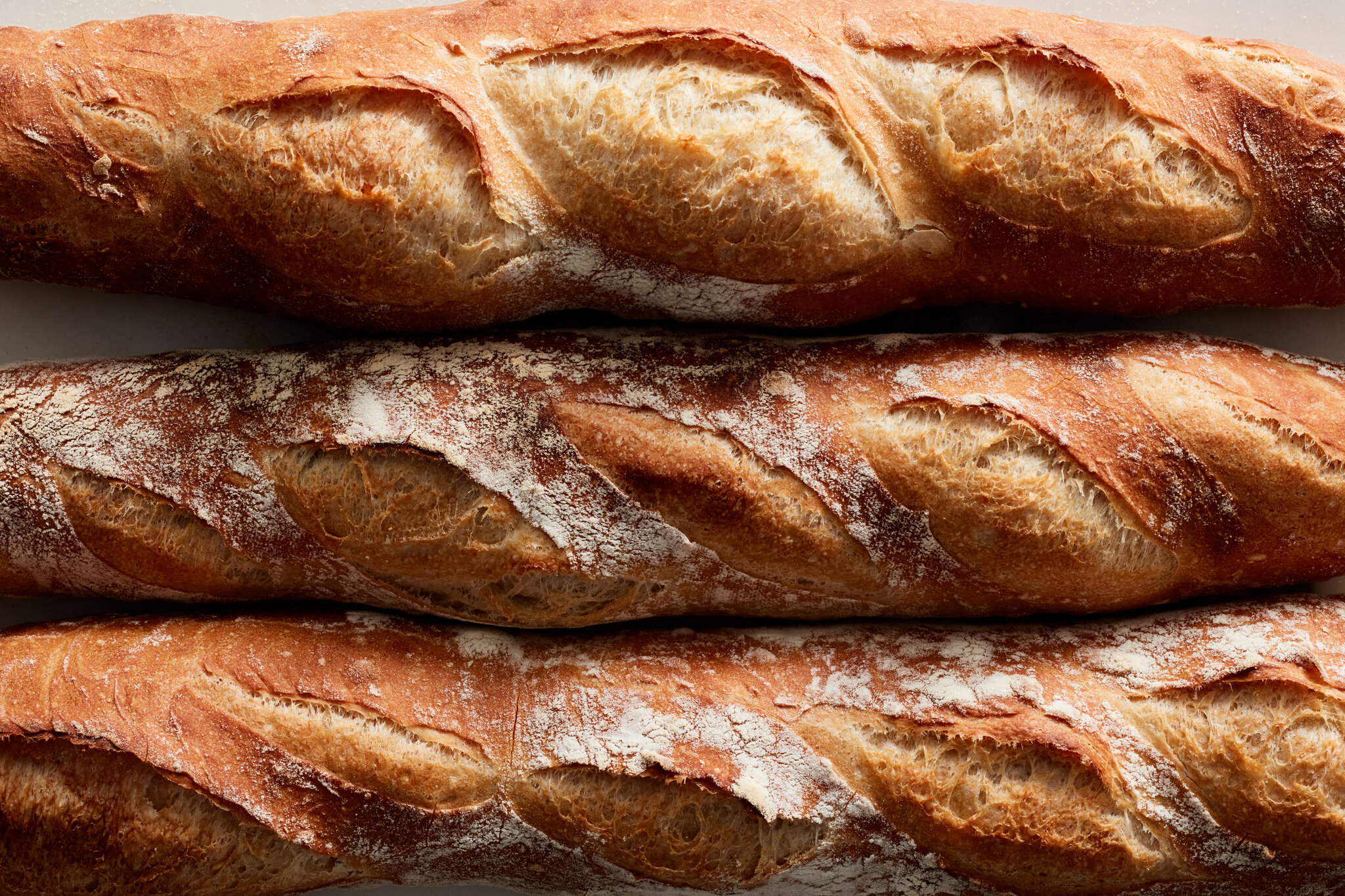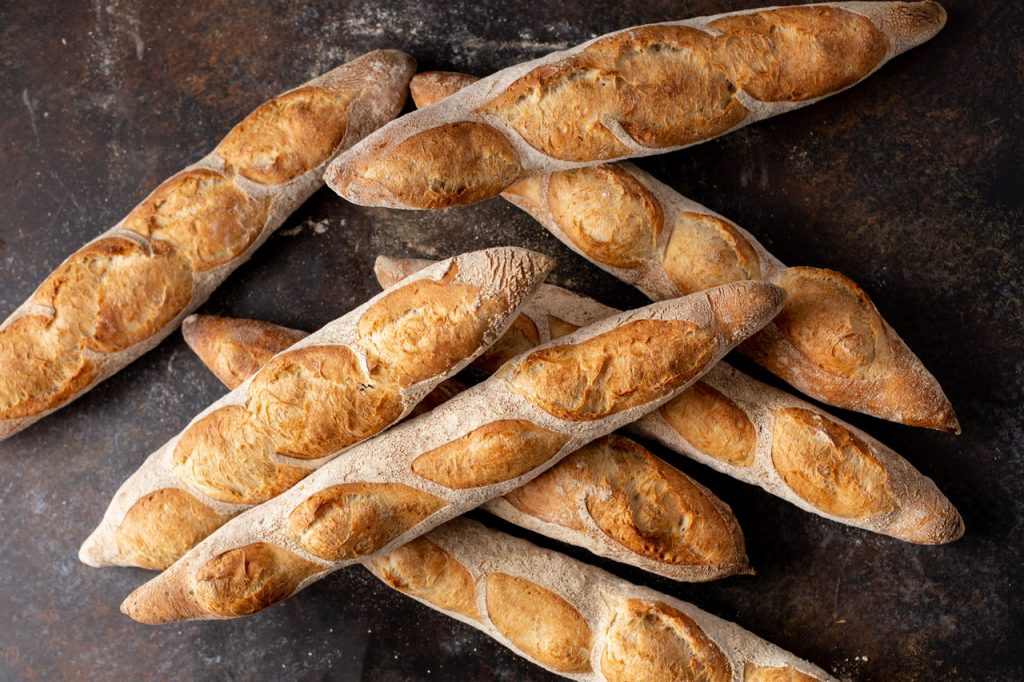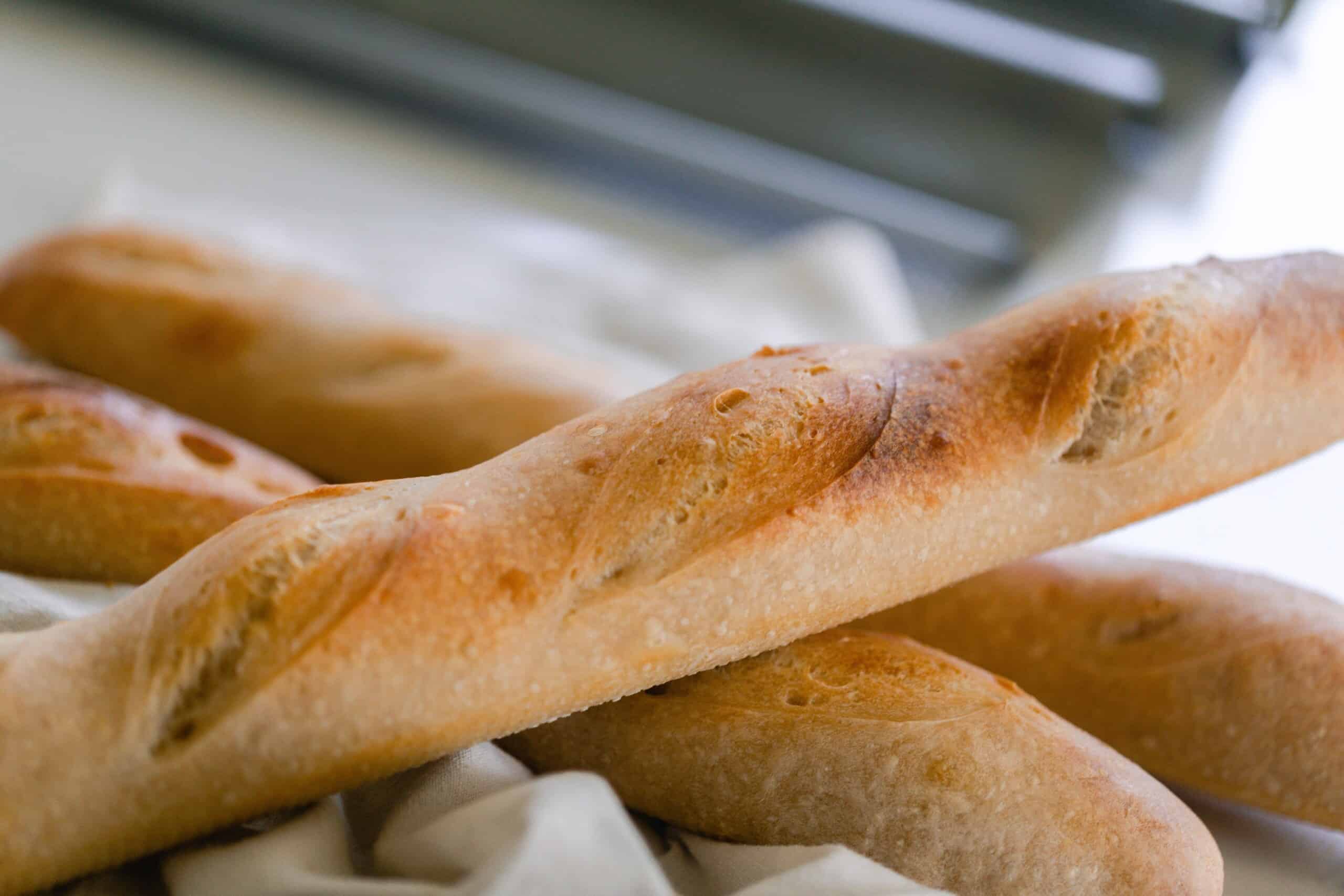Contents
The baguette, a long, thin loaf of French bread with a crisp crust and soft interior, is more than just a staple of French cuisine—it is a symbol of French culture and heritage. Recognized worldwide for its distinctive shape and texture, the baguette has a rich history and continues to play a significant role in both traditional and contemporary culinary scenes. This article explores the origins, baking techniques, cultural significance, and global influence of the baguette, highlighting why this simple yet iconic bread remains beloved around the world.
Historical Origins Baguette

The exact origins of the baguette are somewhat unclear, but its development is closely tied to the history of bread making in France. The term “baguette” means “wand” or “stick” in French, reflecting its elongated shape. While long, thin breads have existed in various forms throughout history, the modern baguette as we know it began to take shape in the 19th and early 20th centuries.
One popular theory suggests that the baguette’s development was influenced by the introduction of Viennese steam ovens to France in the mid-19th century. These ovens allowed bakers to create bread with a lighter, airier crumb and a crisp crust, characteristics that are quintessential to the baguette. Another contributing factor was the French labor laws enacted in the early 20th century, which restricted the hours bakers could work. The baguette’s relatively short baking time made it a practical solution for these new regulations.
The Art of Baking Baguettes
Baking a perfect baguette is both an art and a science, requiring precise ingredients, techniques, and timing. The process involves several key steps, each contributing to the bread’s distinctive qualities.
Ingredients
The traditional baguette recipe is remarkably simple, consisting of only four ingredients: flour, water, yeast, and salt. The quality of these ingredients is crucial, particularly the flour, which should be high in protein to ensure good gluten development. French bakers often use a type of flour known as T55, which has the right balance of protein and ash content for making baguettes.
Mixing and Fermentation
The dough for baguettes is mixed and kneaded until it becomes smooth and elastic. This process develops the gluten, which gives the bread its structure. After mixing, the dough undergoes a fermentation process, typically in two stages. The first fermentation, or bulk fermentation, allows the dough to rise and develop flavor. This stage can last anywhere from one to three hours, depending on the temperature and yeast activity.
Shaping and Proofing
Once the dough has risen, it is divided into individual portions and shaped into the characteristic long, thin loaves. Shaping the dough correctly is essential to achieving the baguette’s iconic shape and texture. The dough is rolled and stretched carefully to avoid deflating the air pockets formed during fermentation.
After shaping, the loaves undergo a final proofing stage, during which they rise again. This proofing period is shorter than the initial fermentation and allows the dough to develop its final volume and structure.
Scoring and Baking

Before baking, the baguettes are scored with a sharp blade, creating diagonal slashes on the surface. These scores allow the bread to expand properly in the oven and contribute to the baguette’s rustic appearance. The loaves are then baked in a hot oven, often with steam, which helps create a crisp, golden crust while keeping the interior soft and airy.
Cultural Significance
In France, the baguette is more than just bread; it is a cultural icon. The French consume millions of baguettes every day, and the bread is deeply embedded in daily life. A trip to the local boulangerie (bakery) to buy a fresh baguette is a daily ritual for many French people, and it is common to see Parisians walking home with a baguette tucked under their arm.
The baguette also plays a role in social and family life. It is often served as part of a traditional French meal, used for making sandwiches, or simply enjoyed with a piece of cheese and a glass of wine. The bread’s versatility and simplicity make it a staple in French households.
In 1993, the French government passed the “Décret Pain” (Bread Decree), which established regulations for making traditional French bread, including the baguette. According to this decree, a traditional baguette must be made only with wheat flour, water, yeast, and salt, and it must be free of additives and preservatives. This law underscores the importance of preserving the authenticity and quality of French bread.
Global Influence
The baguette’s influence extends far beyond France. As French culture spread around the world through colonization, trade, and immigration, so too did the baguette. Today, baguettes are enjoyed in many countries, each adding its unique twist to the traditional recipe.
United States
In the United States, the baguette has become a popular bread choice for everything from gourmet sandwiches to upscale dining. American bakeries often offer a variety of baguettes, including whole grain and flavored versions. The artisanal bread movement in the U.S. has also embraced the baguette, with many bakers focusing on traditional techniques and high-quality ingredients.
Vietnam
One of the most notable adaptations of the baguette can be found in Vietnam, where it was introduced during French colonial rule. The Vietnamese baguette, known as “bánh mì,” is shorter and has a lighter, airier texture compared to its French counterpart. Bánh mì sandwiches, made with various fillings such as pickled vegetables, pâté, and grilled meats, have become a beloved street food both in Vietnam and internationally.
Other Countries
In countries like Canada, Australia, and the UK, the baguette has also found a place in local cuisine. Many bakeries and supermarkets offer fresh baguettes, and the bread is often featured in restaurants and cafes. In these countries, the baguette is appreciated for its versatility and ability to complement a wide range of dishes.
The Science Behind the Baguette

Understanding the science behind the baguette can enhance the baking process and the final product. The key to a great baguette lies in the balance of fermentation, gluten development, and baking techniques.
Fermentation
Fermentation is crucial for developing the flavor and texture of the baguette. During fermentation, yeast converts sugars in the flour into carbon dioxide and alcohol, causing the dough to rise and develop complex flavors. The fermentation process also creates organic acids that contribute to the bread’s flavor and help strengthen the gluten network.
Gluten Development
Gluten, a protein found in wheat flour, is essential latoto for the structure and chewiness of the baguette. Kneading the dough helps develop the gluten network, creating elasticity and strength. Proper gluten development ensures that the dough can trap gas bubbles during fermentation, resulting in a light and airy crumb.
Baking Techniques
Baking the baguette in a hot, steamy oven is essential for achieving its signature crust and crumb. Steam helps keep the surface of the dough moist during the initial stages of baking, allowing it to expand fully without tearing. As the steam dissipates, the crust becomes crisp and golden brown. The high baking temperature also ensures that the interior of the bread cooks quickly, retaining its soft and airy texture.
Conclusion: A Timeless Classic
The baguette’s journey from its historical roots to its modern-day popularity is a testament to its timeless appeal and versatility. Whether enjoyed in its traditional form in a Parisian café, as a bánh mì sandwich in Vietnam, or as part of a gourmet meal in New York City, the baguette remains a beloved and iconic bread.
Its simple ingredients and straightforward preparation belie the complexity and skill required to perfect this classic bread. The baguette’s crisp crust, airy interior, and rich history continue to captivate and inspire bakers and food lovers around the world.
As culinary trends evolve and new innovations emerge, the baguette’s legacy as a symbol of French culture and culinary excellence endures. This humble loaf, with its distinctive shape and delicious taste, will undoubtedly remain a cherished staple in kitchens and bakeries for generations to come.
Read More Article About “Goi Cuon Vietnam: Kesegaran Hidangan Tradisional dari Negeri Paman Ho“



